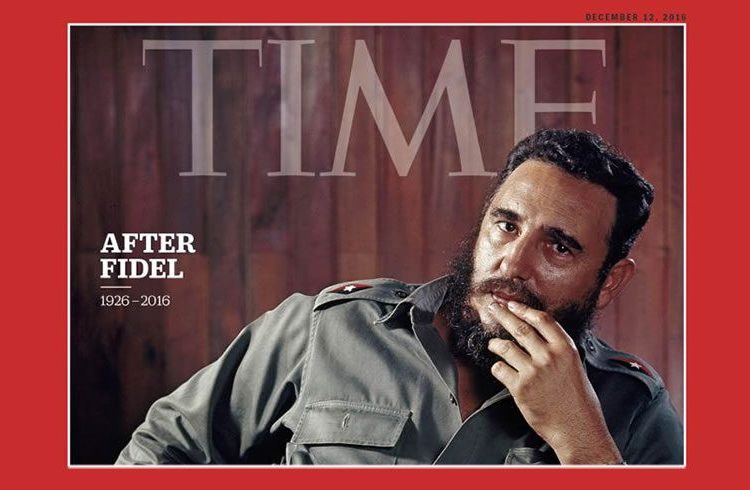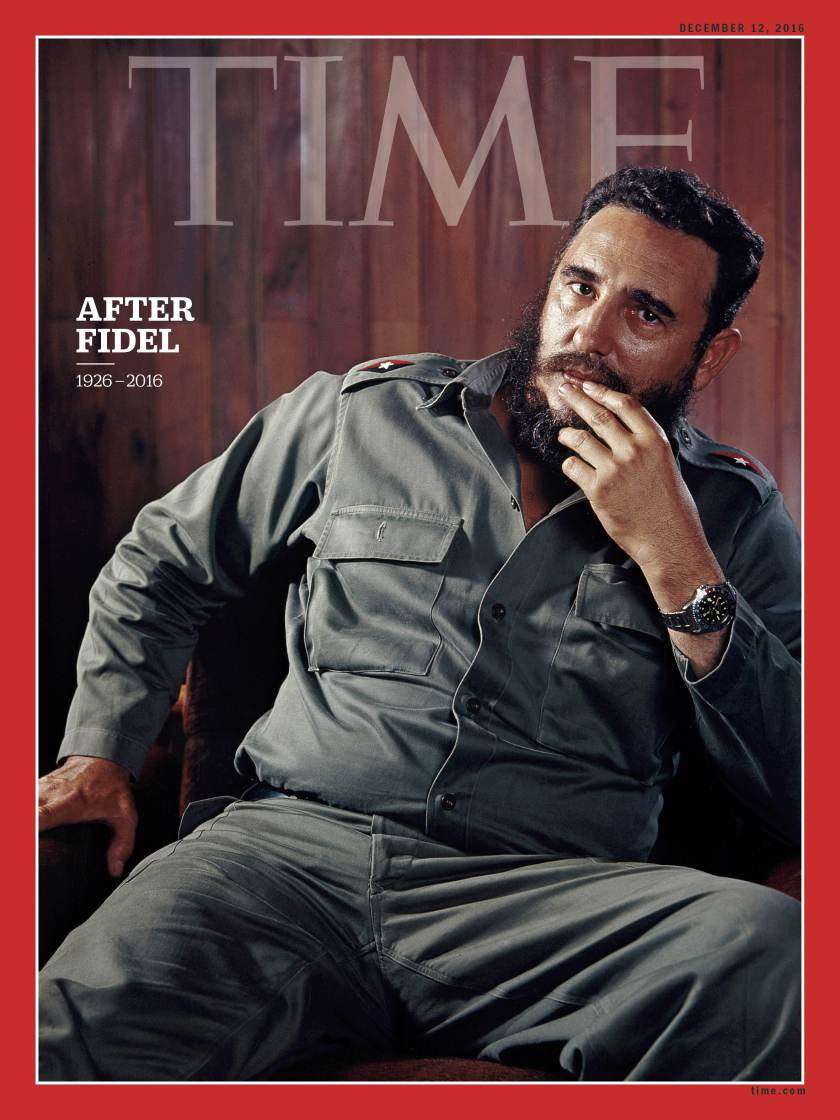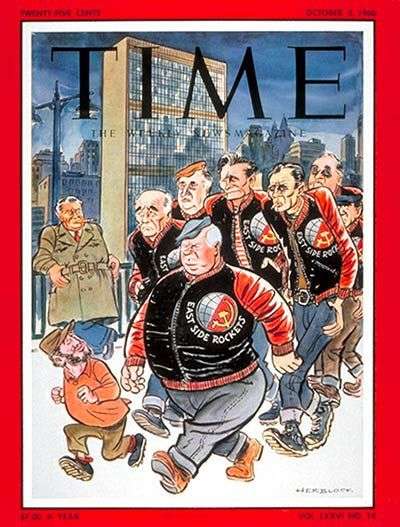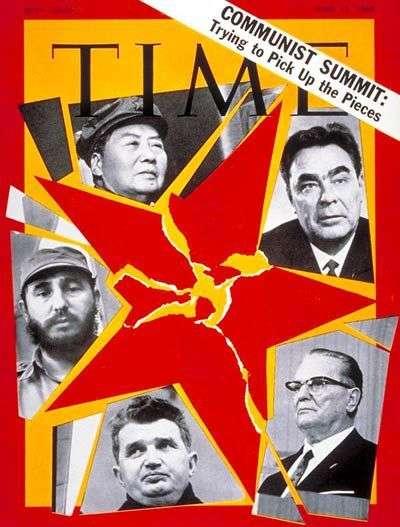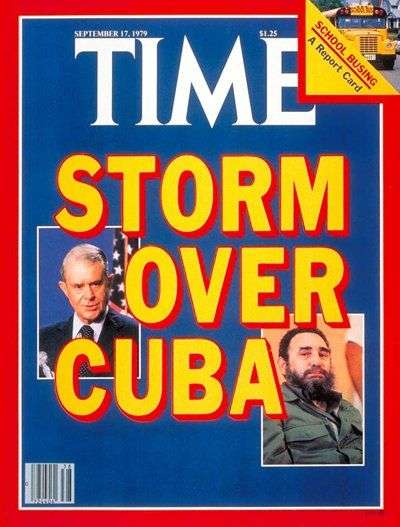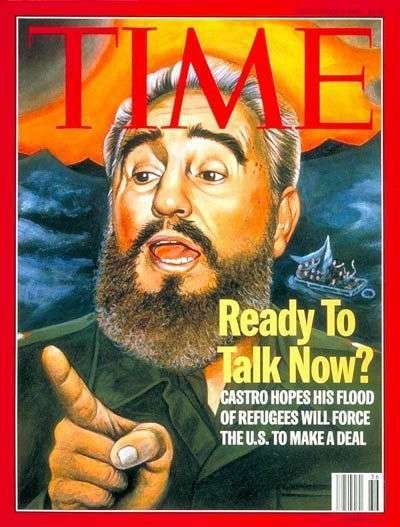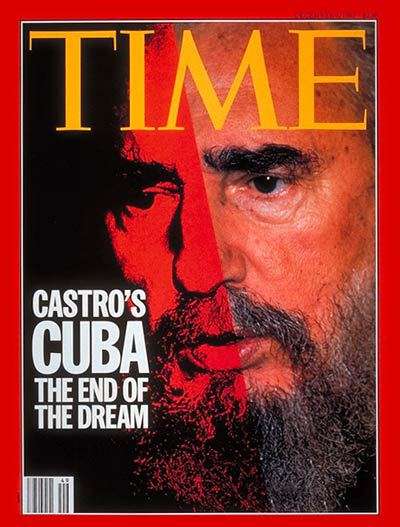Dressed in his olive green uniform, informally sitting sideways, almost irreverent, a still young Fidel Castro looks at the camera in a reflexive pose. He does not smile. He does not use his cap. He does not speak. He wears a flashy watch on his left wrist, while the fingers of that hand slightly caress his lips, his uncombed beard.
This is no longer the Fidel of the Sierra but rather that of the Revolution in power. A calm and at the same time defiant Fidel, sure and at the same time iconoclast. He has nothing to do with a formal politician or of the formerly always animated and loquacious leader. A singular and at the same time paradigmatic Fidel, resuscitated now after his death, in the classic photo taken in 1971 by master Yousuf Karsh. This is the Fidel of Time magazine’s most recent cover.
While alive, Fidel Castro appeared nine times on the cover of the U.S. weekly that started being published in 1923 and that today has a global scope.
He has come out for the tenth time in the most recent edition and it is because Fidel has died in Havana at the age of 90.
The Cuban leader marked an era, beyond the angle from which he is evaluated and, as a news hunter, Time kept him for years in its sight.
His January 26, 1959 cover is famous. An image of the victorious commander in the mountains, between Cuban and 26th of July Movement flags, presents him to U.S. readers during a brief “honeymoon” with that country’s press.
The inside article titled “The Vindictive Visionary” describes him as “A spellbinding romantic, he can talk spontaneously for as much as five hours without strain. He hates desks—behind which he may have to sit to run Cuba.”
Neither will the tone of the next images be affectionate. In October 8, 1965, for example, Fidel returns to the cover. It is a surly Fidel, with a lifted hand in a gesture of discussion, in full verbal offensive. Behind him, cane fields and wire fences serve as the screen set. The portrait, obviously, doesn’t aim to be friendly. Neither is the cover’s headline: “Cuba, the Revolution in Decadence.” More explanations or suppositions are not necessary.
In June 1969, the Cuban leader again appears in Time, but now in a choral portrait. He is accompanying other leaders of the socialist bloc like Soviet Leonid Brezhnev and Chinese Mao Zedong. The association, around a red star in pieces, gives a clear account of the place the publication assigns to Fidel in international geopolitics. The position of the magazine, again explicit in a headline, confirms the belligerent tone of the cold war: “Communist Summit: Trying to Pick Up the Pieces.”
After more than three decades at the head of the island, during which moreover he gained a notable international protagonist role, the 1990s bring back the figure of Fidel to the U.S. magazine.
The rigors of the so-called Special Period, which in the opinion of many would inevitably lead to the end of the Cuban Revolution, place him on the cover visibly concerned. The greying beard, the weather-beaten face, the look far from his characteristic haughtiness. A line divides Fidel’s face, coloring in red the left side. This is the portrait of December 6, 1993, whose title proclaims: “Castro’s Cuba: The End of the Dream.” But the Cuban Revolution did not collapse.
A year later, in the midst of the so-called rafters crisis, Time retakes the defiant Fidel. The index finger of the left hand held up; the mouth open in the middle of a phrase; the face, although older, not defeated. In the background, a raft full of faceless persons in a stormy sea. “Ready to Talk?” – the magazine asks, as if it were the very Commander facing up to the U.S. government.
A few months later, in 1995 a more even-tempered Fidel returns. Sideways, with a reassuring look, this Fidel is the same and is another, according to the circumstances the country is going through. The magazine describes him as “The Lion in Winter,” recalling the famous British film starring Peter O’Toole based on the plays by the same name.
The comparison is clear: for Time Fidel is like that Henry II of England, in the middle of his kingdom’s tribulations. The cover headline announces an exclusive interview in which “Fidel defends his compromises,” in the middle of the crisis and Cuba open to business.
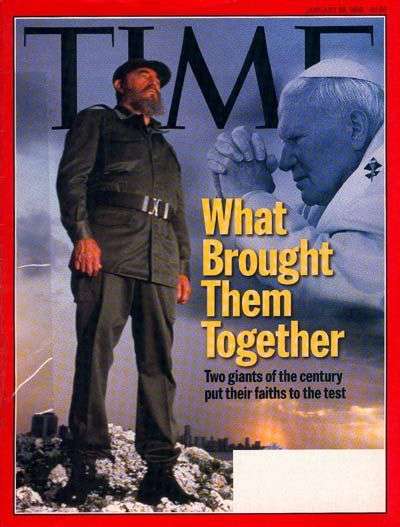 Toward the end of the decade, another historic event places Fidel on the cover of Time. This time he is accompanied by Pope John Paul II, who in 1998 has just visited the island. “Two giants of the century put their faith to the test,” the publication points out. But while the Supreme Pontiff is shown contrite, praying, the Cuban leader appears arrogant, wearing his characteristic fatigues, with Havana and all of Cuba at his back.
Toward the end of the decade, another historic event places Fidel on the cover of Time. This time he is accompanied by Pope John Paul II, who in 1998 has just visited the island. “Two giants of the century put their faith to the test,” the publication points out. But while the Supreme Pontiff is shown contrite, praying, the Cuban leader appears arrogant, wearing his characteristic fatigues, with Havana and all of Cuba at his back.
“Both are absolute rulers of their realms. Both are traditionalists and conservatives within their faiths, standing firm against revisionist thinking from within. Each is charismatic and charming, larger than life, with power rooted in his persona. Each plays a dominant role on the world stage, imposing his system of belief upon millions through brilliant intellect and sheer force of will. They are both skilled politicians, adept at tailoring their messages to the moment, yet each always has his eye on the ultimate judgment of history,” the editorial reads.
Almost 20 years have gone by since then. The world has changed since then, but Fidel continues being news. This time Time includes a text titled “How Castro Will Be Trump’s First Foreign Policy Test.”
Fidel Castro’s death is now the event that has returned him to the covers, to that of Time and of many other international media. New serious and transcendent questions are coming up: will he be able to attract new headlines? Which Fidel would be retaken, if he is? Time, unstoppable and sensible, will tell.

